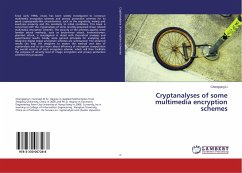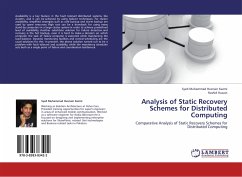
Cryptanalyses of some multimedia encryption schemes
Versandkostenfrei!
Versandfertig in 6-10 Tagen
43,99 €
inkl. MwSt.

PAYBACK Punkte
22 °P sammeln!
Since early 1990s, chaos has been widely investigated to construct multimedia encryption schemes and privacy protection schemes for its good cryptography-like characteristics, such as the ergodicity, mixing and exactness property and the sensitivity to initial conditions. This book is concerned with the cryptanalyses of some recently-proposed chaos related multimedia encryption schemes. The security of the schemes against some familiar attack methods, such as brute-force attack, known/chosen-plaintext attack, is investigated in detail with theoretical analyses and experimental results. Finally...
Since early 1990s, chaos has been widely investigated to construct multimedia encryption schemes and privacy protection schemes for its good cryptography-like characteristics, such as the ergodicity, mixing and exactness property and the sensitivity to initial conditions. This book is concerned with the cryptanalyses of some recently-proposed chaos related multimedia encryption schemes. The security of the schemes against some familiar attack methods, such as brute-force attack, known/chosen-plaintext attack, is investigated in detail with theoretical analyses and experimental results. Finally, some general principles for analyzing and designing digital image encryption schemes are summarized. The obtained results can help the designers to master the method and idea of cryptanalysis and to care more about efficiency of encryption computation for overall security of each encryption scheme, which will then facilitate the progress of security level of image encryption and privacy protection schemes they proposed.












